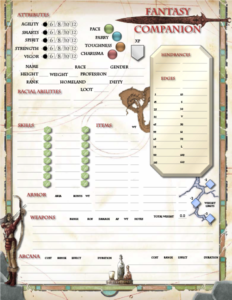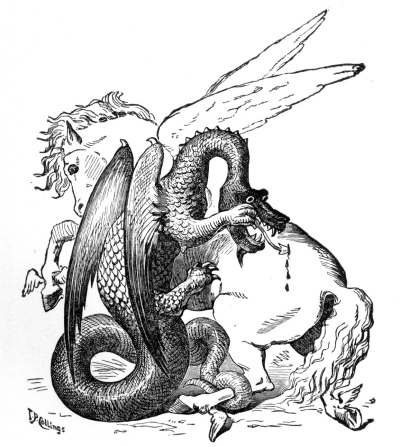In my previous blog post I looked at
Plot Point Episodes vs Savage Tales vs One Sheets, and that expanded on an earlier blog post about using
TV Shows as Plot Point Campaigns. If you've read those posts you should have a fairly good idea of how to go about creating a Plot Point campaign by reverse engineering a TV show, turning each episode into either a Plot Point Episode or a Savage Tale depending on its importance to the central plot.
But what about designing a Plot Point Campaign based on a roleplaying setting, which isn't already broken down into convenient episodes? Many Savage Worlds settings already include their own Plot Point Campaign, but perhaps you're running one that doesn't - or maybe you've designed your own custom setting, and now you want to add a Plot Point Campaign. Where do you start?
Disclaimer: It should go without saying that this is all my personal opinion. There's no "one true way" to write a Plot Point Campaign, but this approach works for me, so perhaps others may find it of interest as well.
Identify the Overarching Plot
It's obviously necessary to define the central plot of the campaign before writing the Plot Point Episodes, so let's cover that first.
Most official Plot Point Campaigns are pretty epic in scope, often to the point of being rather destructive towards their setting. Consider Necessary Evil, or 50 Fathoms, for example - the entire campaign revolves around a threat to the world, and once the heroes have defeated that threat much of the setting becomes obsolete. You can continue running the campaign after the players defeat the main villain/s of the story, but the setting will evolve into something quite different.
Of course you don't have to take things quite that far, but the campaign should at least cover a major event, otherwise it's not going to feel very cinematic. If you're creating a Plot Point Campaign for Eberron, for example, then it might be set during the Last War, or it could involve a world-shattering event instigated by the Lord of Blades, or a second planar incursion of Xoriat, etc - something of major significance to the setting.
In addition to the main thread, I also like to weave in a couple of subthreads, to help give the story depth. These subthreads should support the main thread without overwhelming it.
Summarize the Episodes
Once you've defined the overarching plot, it's time to break your story down into a series of Plot Point Episodes. Necessary Evil provides a Plot Point Summary with around 50 words per episode, and I find this an excellent way to design the outline for the campaign, giving a short overview of each episode.
I find that 10 Plot Point Episodes is a good number to aim for, although anything in the range 8-12 is fine for most campaigns.
Example: Drakonheim: City of Bones

One of my recent projects involved writing a
Savage Worlds companion for the Drakonheim setting. Although it doesn't include a Plot Point Campaign, my work
did require me to become very familiar with the setting, making it an easy candidate to use as an example.
The Drakonheim setting contains a lot of great content for a campaign, but a few things in particular scream out "epic" to me. These are the three threads I would probably choose to weave together into the overarching plot:
Central Thread: Great Wyrm
The recently-awakened dragon Kolrax has started using his potent magic to secretly bind lesser beings to his cause, demanding obedience from a hobgoblin clan as well as a clandestine organization within Drakonheim. But how does such a proud and arrogant creature view a city that was built with the bones of his own mother, and how will he use his expanding influence?
Subthread 1: Band of Four
The Band of Four were renowned heroes from the Golden Age of Drakonheim, who were killed in a backlash of necromantic energy after destroying the Lich King Ezarion. A seer prophesied that they would return again in Drakonheim's greatest hour of need, but such prophecies often have an unexpected twist.
Subthread 2: Ancient Lore
The Gray Society is an ancient order of necromancers, who now walk openly in the streets of Drakonheim, after saving the city from a hobgoblin invasion. Some of their researchers have recently rediscovered a long-lost technique for creating intelligent undead, but where did they discover this dark ritual? For not since the time of Ezarion has a mortal wizard been able to achieve such a feat.
Plot Point Summary
Here's my Plot Point Summary for a fictitious Drakonheim Plot Point Campaign, split into 10 episodes. Obviously this summary includes a lot of references to information found within the setting book, so I'm afraid much of it may sound obscure if you're not familiar with Drakonheim - but the underlying principle should still be fairly self-explanatory, and can be applied to any setting.
Episode 1: Gray Matter
A menacing creature has emerged from the sewers, and hunts the streets of Drakonheim. Is it an escaped experiment of the Gray Society? An ancient guardian disturbed by goblin diggers? Or an elaborate setup designed to turn the public against the necromancers? This pilot episode introduces the heroes to the setting, and to the cutthroat politics of Drakonheim's major factions.
Episode 2: Broken Crown
The heroes are hired to investigate the origins of the Gray Man, and uncover his secrets, but they soon find themselves caught up in a deadly race against other organizations. Who are these mysterious rivals, and can the heroes beat them to the prize?
Episode 3: Taste of Power
A rash of crimes has recently hit a number of key businesses in Drakonheim, and the only thing connecting them is an addictive elixir that has a strange effect on those who drink it. But what is the source of these potions, and who is selling them to the criminal underground?
Episode 4: Sleeper Agent
Strange things are afoot in Drakonheim, and someone powerful is trying to use the heroes as pawns in a deadly game. But who is pulling the strings, and what is their true goal? Can the heroes uncover the identity of this mysterious figure before it is too late?
Episode 5: Eyes of the Enemy
The hobgoblin army was scattered when Hazdrol was killed, but a new war chief has swiftly risen to prominence, rallying the clans to his cause. However there's something disturbingly familiar about his appearance - can the heroes connect the dots and uncover the truth?
Episode 6: Ezarion's Legacy
The pieces of an old mystery begin to fall into place, as the heroes discover a very dark secret. But even a cursed sword cuts both ways, and Drakonheim will need every advantage it can get if the looming threat proves real.
Episode 7: Drums of War
Drakonheim faces war once again, and the stakes are even higher than last time. The heroes must call upon all their allies, old and new, if the city is to have any hope of survival.
Episode 8: Return of the Four
As Drakonheim stands on the brink of war, a great prophecy is finally fulfilled, but it comes at a terrible price that none had predicted, and which few are willing to pay.
Episode 9: Bone Legion
Secret organizations finally show their hands, revealing their secrets as the armies clash, and Drakonheim finds itself in the midst of war on all fronts. The fate of the city hangs in the balance, and the future looks grim.
Episode 10: Blast from the Past
With the armies locked in terrible battle, the true enemy finally reveals himself, and only the heroes have the means to stop him. But how far are they willing to go, and how much are they willing to sacrifice, to save the people of Drakonheim?
Writing the Adventures
As I mentioned
in my previous blog post, a typically Plot Point Episode would probably be in the region of 1200 words, while a typical Savage Tale would usually average around 1000 words, and these would be structured in a similar way to a One Sheet. Hopefully you've already written a few One Sheets before attempting to tackle a full Plot Point Campaign - so now you just have to apply the same approach to each of the Plot Point Episodes and Savage Tales.
Savage Tales
The Drakonheim setting contains eight adventure outlines that are each around the size of a Savage Tale and structured in a very similar way, and these adventures introduce the players to several important locations and people, so we're already got a head start. However I'd probably want to add at least another dozen Savage Tales, perhaps even twice that, if I wanted something comparable in size with other Plot Point Campaigns.
Adventure Generator
Most Plot Point Campaigns also include a random adventure generator, as this is a great way to add extra adventures on the fly. The Drakonheim companion already includes an adventure generator, but if you're thinking of creating your own I'd recommend taking a look at other setting books, as well as online adventure generators - you don't need anything complex, just a skeleton of a story for the GM to build upon.






